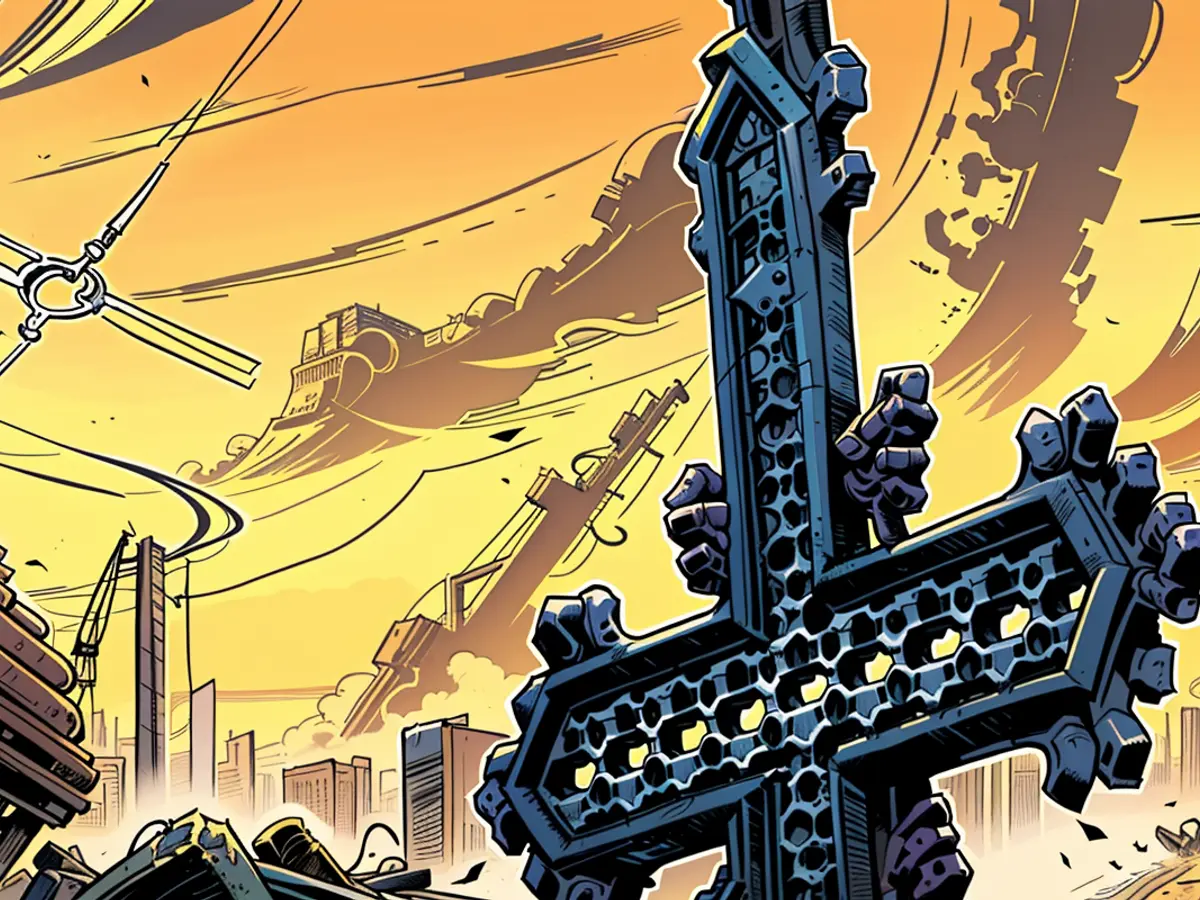Cemetery metal thefts on the rise in certain areas
Grab those decorative touches: trinkets, flower pots, figurines - the key element is they're crafted from coveted metals such as copper or bronze. Metal poachers aren't just zeroing in on construction sites or rail tracks, they've also set their sights on cemetery décor, pilfering in bulk. Recently, a substantial bronze Madonna figure was swiped in Emerkingen (Alb-Donau district), a bronze horse sculpture disappeared from Ochsenhausen (Biberach district) a few weeks prior, and in Sandhausen (Rhein-Neckar district), thieves made off with bronze grave decorations from 60 graves. Similar events occurred in Achern (Ortenau district), with approximately 40 copper items disappearing from graves at the end of August. Police estimate the damages to be in the five-figure range. Bretten in the Karlsruhe district also experienced a large-scale grave decoration heist in August, leaving an officer to remark it was "unprecedented for Bretten."
Pocketing big bucks
Unfortunate incidents of this nature ensued in the Kraichgau region, where bronze plaques from numerous war graves were pilfered in mid-August. A spokesperson corroborated that these plaques clocked in at around 13,000 euros each for installation in 2006, and other bronze grave decorations were plundered at the same time. Total losses were approximately 18,000 euros. Heidelberg cemeteries suffered a similar predicament, with valuables like vases, statues, crosses, and lights worth approximately 50,000 euros vanishing in June. Düsseldorf too fell victim to these criminals, with eleven colossal bronze figures swiped in mid-August, the costs estimated in the six-figure range.
Waves of pilferage
These acts of plunder tend to occur in waves, Tobias Pehle, managing director of the Kuratorium Immaterielles Erbe Friedhofskultur, noted. "Regrettably, this trend has been ongoing for several years." Well-organized gangs are orchestrating these operations, meticulously planning and executing them like a military mission. The goal is the materials - iron, steel, copper, bronze. For the victims, these incidents can cause wrenching emotions. "Essentially, all graves serve as our deceased ancestors' living rooms, and then they're broken into, vandalized, and robbed."
Meager recovery rate
Regrettably, there's no exact tally of such cemetery thefts, as these crimes aren't categorized separately. As per statistics from the state criminal police office, there's been a consistent number of cases for about five years. In 2023, 402 thefts were documented, a decrease from the previous year's 416. The recovery rate is typically slim.
Varying responses from the police
Different police departments have had varying experiences with these incidents. For example, Mannheim police documented around 80 cases last year, a decline from the year prior's 47. Ulm police recorded 42 thefts last year, significantly more than the previous year's 28, while Offenburg police has reported single-digit figures in recent years. In contrast, the Karlsruhe police department has seen an upswing in case numbers for the current year, albeit at a lower level than prior years.
Persisting trouble
These incidents recur frequently, says Herbert Schneider, chairman of the Association of Cemetery Administrators. This turmoil isn't just agonizing for the bereaved but also challenging for cemeteries as sacred spaces. "It hurts twice." Stephan Neuser, general secretary of the Federal Association of German Funeral Directors, also emphasized the severe emotional impact on those affected.
Securing cemeteries: a complex challenge
Improving cemetery security is a multifaceted issue, Schneider believes. Although locking gates, replicating sculptures, and installing alarms are options, cemeteries are public places with the privilege of remaining easily accessible to people. "If burglars use tools like bolt cutters or angle grinders, locked gates prove relatively ineffective. Then the locks are just broken too."
Enrichment Insights
Several reasons contribute to the rise in metal theft from cemeteries:
- Economic Factors: The substantial increase in the value of metals like copper, bronze, and other non-ferrous metals makes them attractive targets for thieves. These metals often adorn grave markers, mausoleums, and other cemetery structures.
- Lack of Security: Many cemeteries lack adequate security measures, including insufficient lighting, poor surveillance, and inadequate fencing.
- Historical Significance: The theft of historical grave markers and monuments not only upsets families but also erases part of the community's history.
The emotional impact and historical loss resulting from metal theft from cemeteries should encourage community engagement, collaboration with local law enforcement, and digitally recording valuable items. Implementing these measures can help in reducing the incidence of metal theft and protecting the historical and emotional significance of the graves and monuments.








